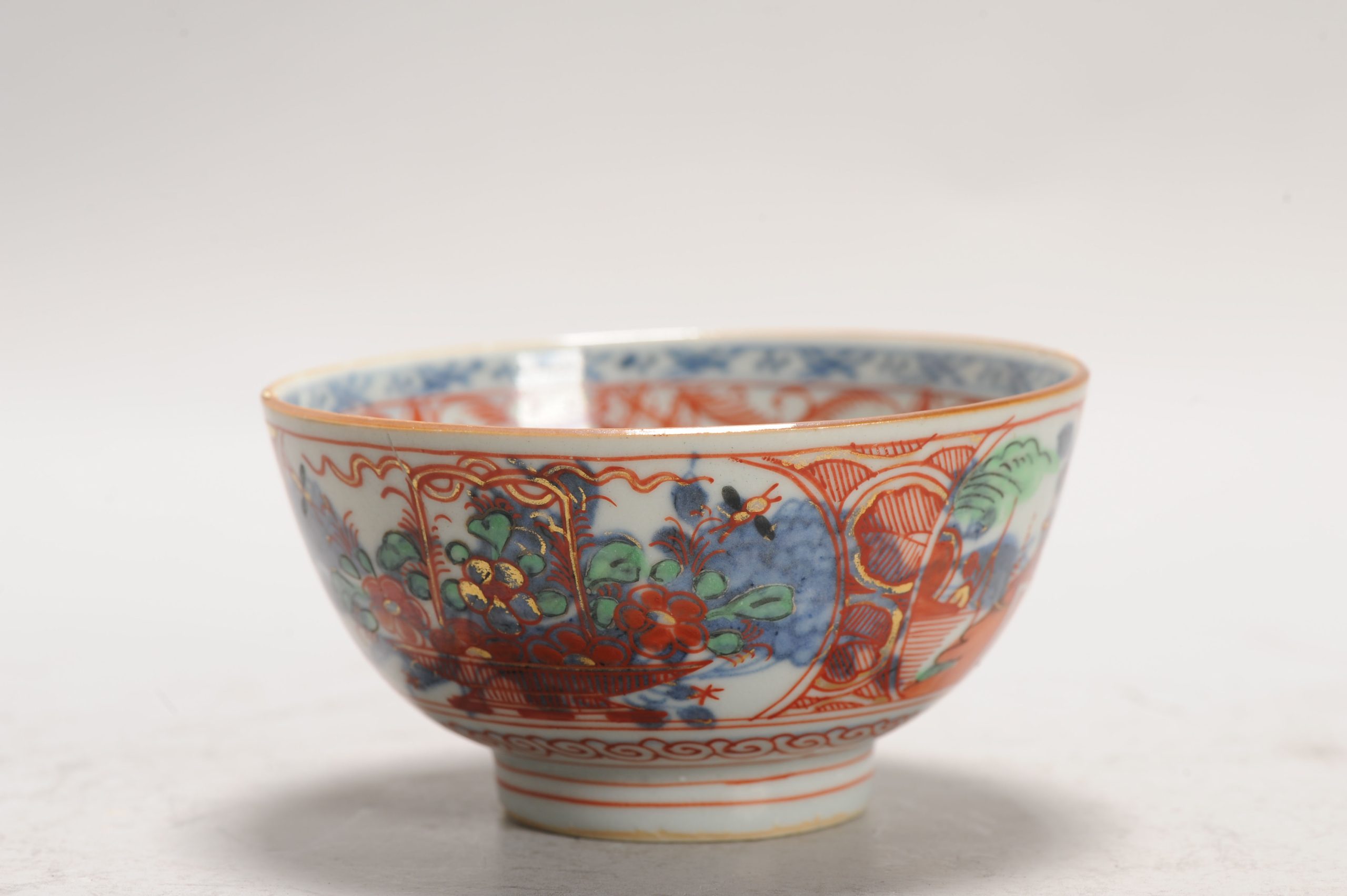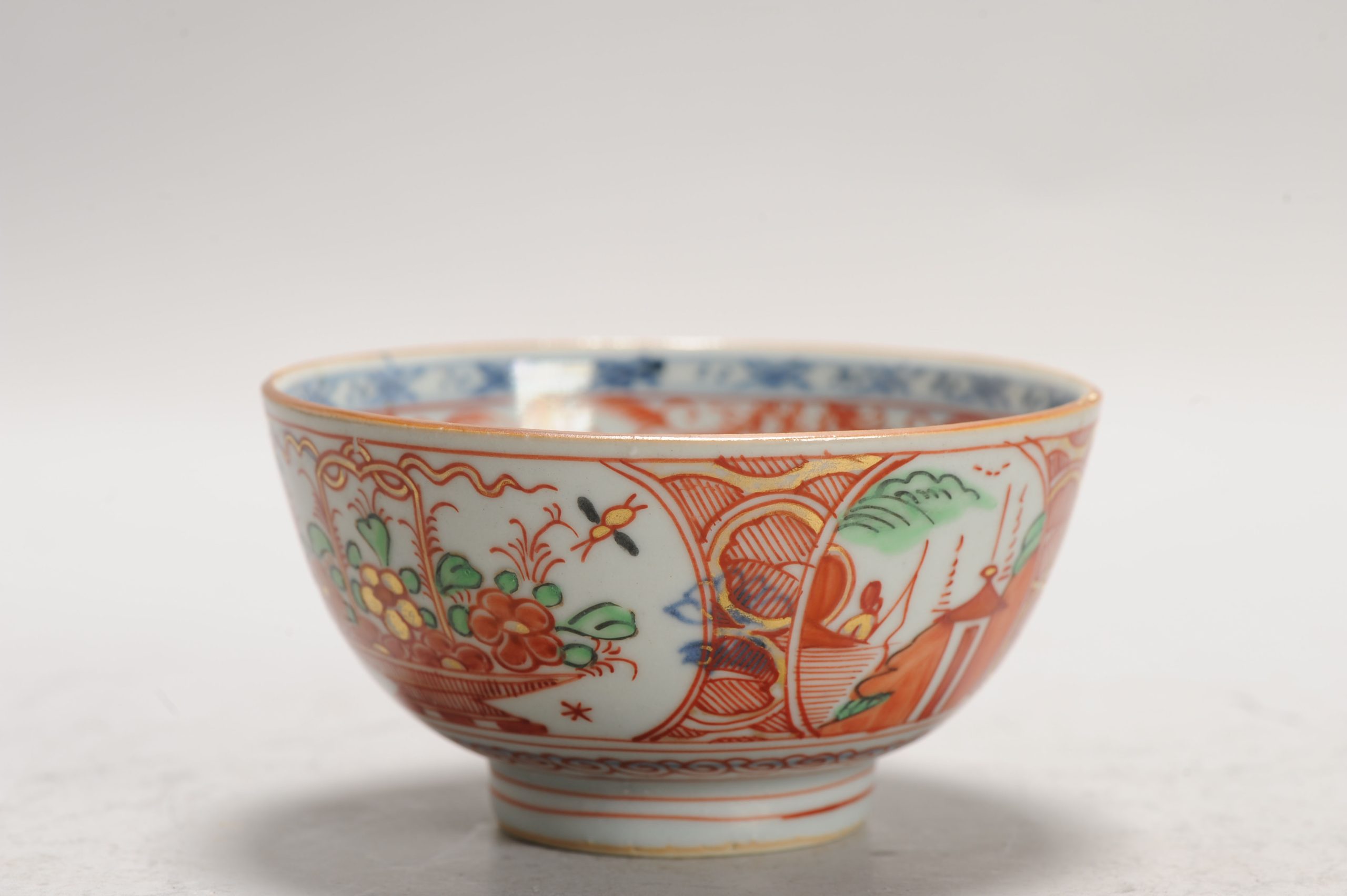Antique Kangxi 17-18th Amsterdam Bont Porcelain Bowl Chinese Polychrome Landscape
无货
Condition Report:
A very nicely made 18th century Kangxi Amsterdam Bont porcelain bowl.
We take a look at Amsterdams Bont porcelain from China. A relatively unknown niche of Chinese porcelain from ca 1680-1740 that was partly decorated in Europe. Because mainstream Chinese collectors have yet to discover the historical significance of these wares they are relatively easy to find in Holland. While also being highly interesting and of often super quality and with an amazing array of decorations. Amsterdams Bont is a name given to porcelain partly decorated in the Netherlands (most likely in cities like Delft, Haarlem, Makkum). Because Amsterdam was at this moment in time the trade centre of the western world and also of the porcelain trade a lot of this over enamelling was probably commissioned by Amsterdam merchants, to reap higher profits on otherwise boring Chinese wares. The name Amsterdam Bont probably derives from the fact that these type of decorated ware was sold by Amsterdam Merchants. Amsterdam Bont consists of either blanc or under glaze blue decorated Chinese porcelain of basic quality, that was later enhanced with red and sometimes other colours in the Netherlands. It must not be mistaken for other type of Chinese & Japanese blanc wares decorated in Europe. Those we simply call European Decorated Chinese porcelain. Amsterdam Bont really is easily recognisable by its colour and style. An interesting side note is that a similar process of overdecorating with red was done in London in more or less the same colours.
Method of manufacturing.
This enhancemend was done on “petit feux” or small fire at a lower temperature. This technique of baking enamels on a lower temperature that was perfected in the Delft around 1670-1680 to compete with the colourfull Japanese porcelain of the time. At the turn of the 17th c Chinese porcelain was cheaper than its Japanese counterpart and by overglazing Chinese porcelain with red it was easy for the Dutch to create a `Imari` feel on the Chinese wares. Catering to the huge craving for imari coloured porcelain in the West at the time. At that time blue _ white porcelain was relatively well known as was blue and white delftware. It was the addition of different colours that sparked huge interest. Everybody wanted porcelain with red in it, and that was what the merchants were giving their customers with this Amsterdam Bont decorations. One must imagine that sometimes a VOC ship brought home hundreds of thousands of pieces of porcelain, often with 1000’s of pieces decorated in the same way (See for example the Geldermalsen or “Nanking” Cargo). So a simple blue and white bowl could easily be increased in value by enhancing its looks.
——————————————————————————————————————
Important information
Auction
We start an auction every week, a nice opportunity to buy pieces for good prices;
https://www.ebay.com/str/antiquefromshangrila?LH_Auction=1
Combined shipment
We combine shipment and have over 2500 fixed listings in store, always good to
take a look if you see other items you like to save some shipping and mother nature:
https://www.ebay.com/usr/theceramics_and_collectibles
All will be packed neat and sent track and trace and insurance. Registered airmail.
Packages are always shipped on the next wednesday.
If there is a specific hurry please contact us.
Offers
All fixed items are open for offers, please feel free to make an offer and we will
respond as soon as possible.
Payment
Payment of items should be done within 5 days after the auction ends, or update us
on later payment. It’s all about good communication.
——————————————————————————————————————
Additional Information
| Region of Origin | |
|---|---|
| Primary Material | |
| Type | |
| China Dynasty Period | |
| Decoration Type / Colour | |
| Century | |
| Emperor | |
| Material | |
| Condition Report |











